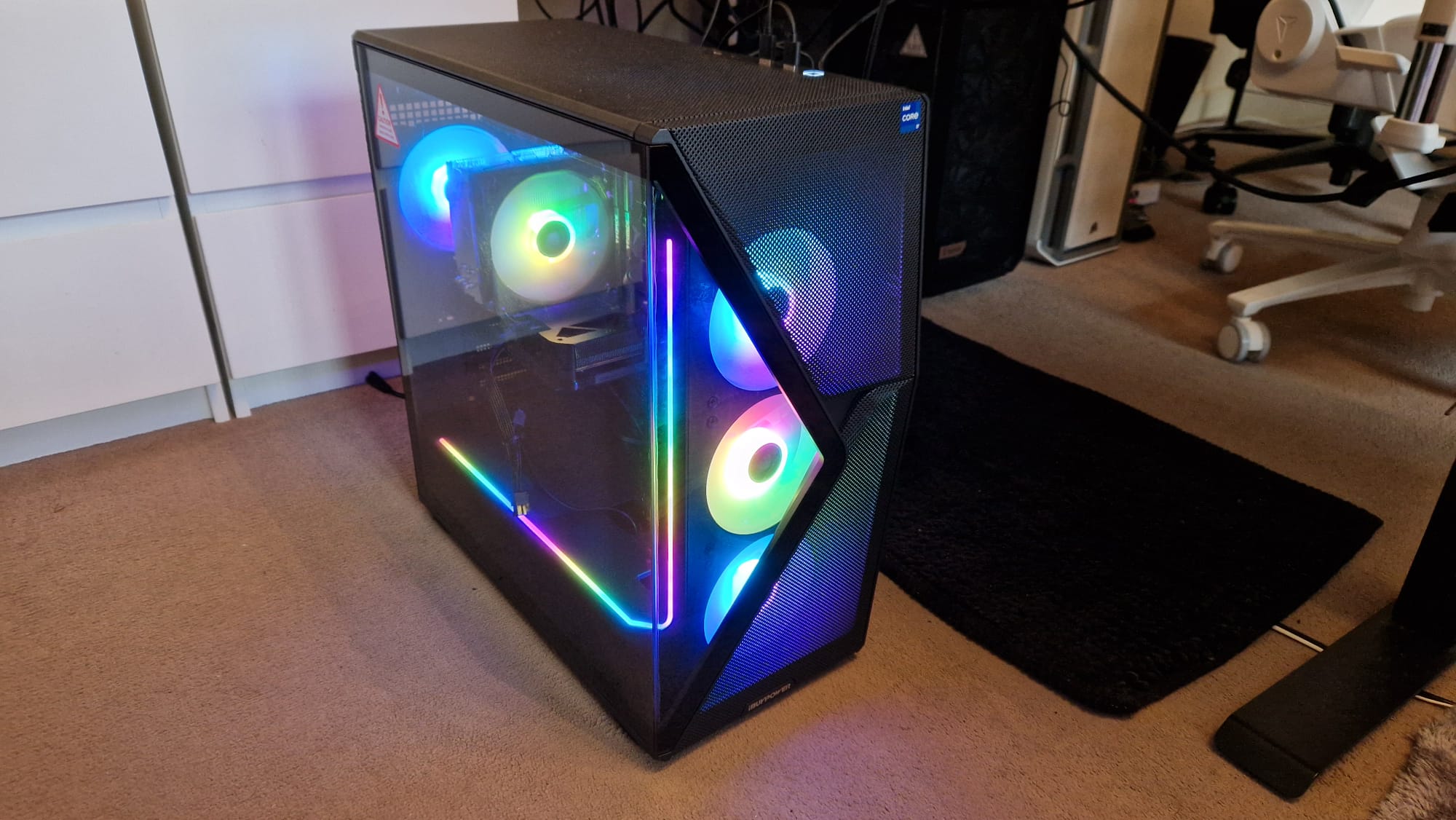
I waited a long time to get behind the wheel of an iBUYPOWER Slate Mesh Gaming PC. I’ve been covering desktop deals for years now, so this is a brand that has been on my radar often. Since I’m based in the UK and it only services the US and parts of Europe, getting a sample for testing has proven difficult. Thankfully, this is one of the most widely available PC brands in the States, and they were willing to work with me despite those logistical difficulties.
It’s hard to ignore iBUYPOWER if you’re shopping for the best gaming PCs in the US. This is a builder that’s spread its wings wide, servicing the masses across the States with a surprising range of gaming builds fit for budget buyers, all the way up to enthusiasts with enormous 4K ambitions. If you have any interest in prebuilt gaming PCs, iBUYPOWER has likely been on your radar, and for good reason.
The Slate range spans a slew of budget-to-mid-range specs. The version I’m testing for this review is the Slate 8MP 003, which costs $1,499 and is powered by an RTX 4060 Ti and a 14th Gen Intel Core i7-14700F.
Specs
Besides the central CPU and GPU components that run the show, your money also gets you 16GB of T-Force DDR5 RAM and a 1TB WD Blue SSD. All of this sits on an ASUS Prime B760M-A AX6 motherboard, which will set you up with a spare M.2 slot for further SSD expansions.
Of course, this particular rig is just one of your options if you’re buying an iBUYPOWER Slate Mesh gaming PC. Also available in the most up-to-date chassis is the Slate MP 002, which costs a higher $2,049 but comes with an Intel Core i7-14700KF (the “K” representing that the CPU has an unlocked multiplier), an RTX 4070 Super, 32GB of DDR5, and a 2TB SSD.
If you’re up for the slightly older chassis, you can get one of the Slate 6M models which sports an AMD Ryzen CPU instead. Besides that, you’ll find a range of different Slate Mesh configurations at the likes of Amazon, Best Buy, and Walmart. All of these configurations span the mid-range and entry-level price range and are frequently discounted to lower levels.
Design
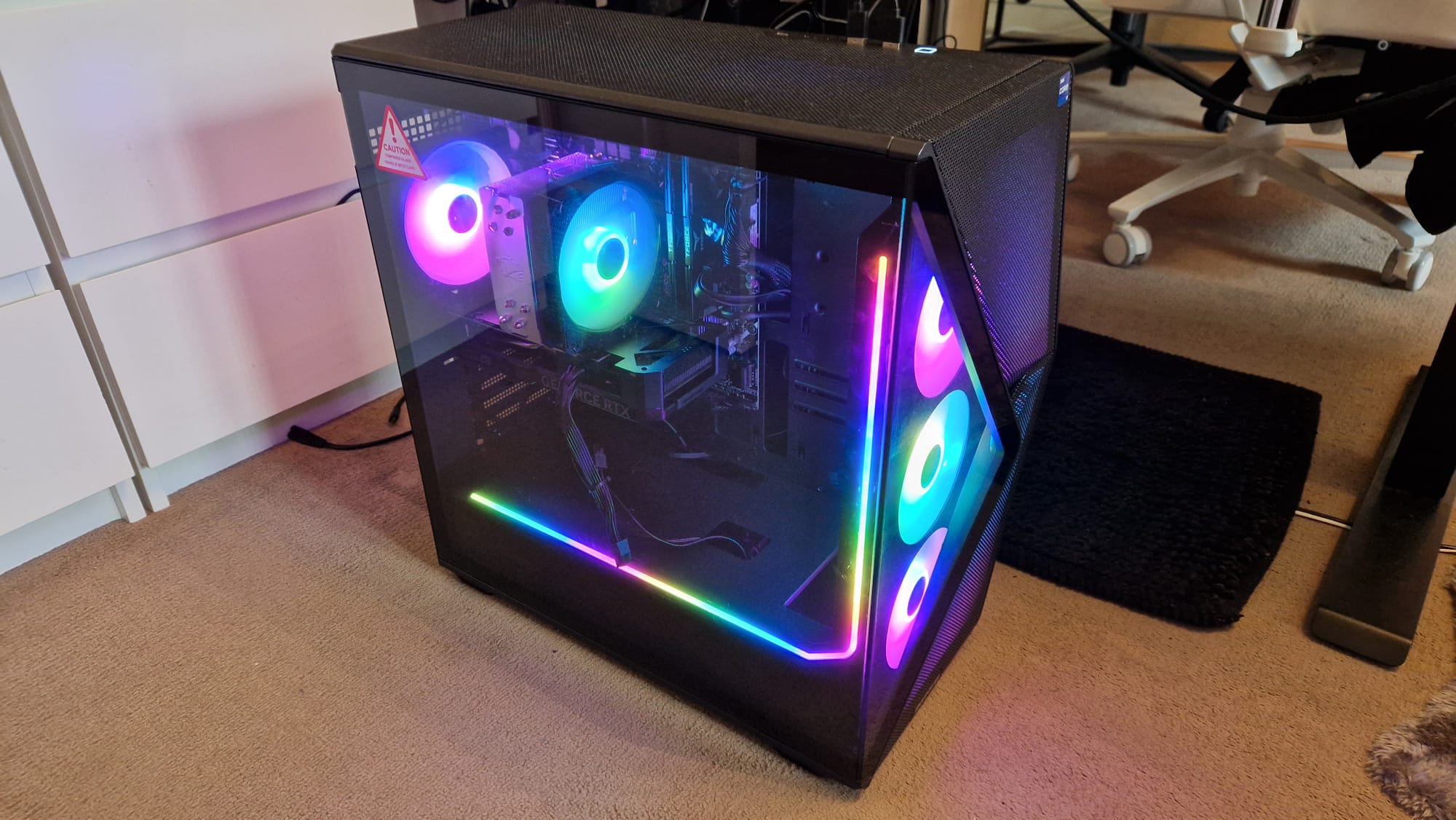
The chassis iBUYPOWER has used for its latest line of Slate PCs is an ambitious one. It’s ballsy enough to resort to air cooling alone when you’re slotting an Intel Core i7-14700F inside your PC, it’s another thing entirely to make the front of your case two-third mesh and one-third transparent paneling. That aesthetic choice could easily restrict airflow going into the case, but luckily it doesn’t seem to hamper things too much in this instance, as we’ll see from my benchmarking tests.
With some cooling reservations out of the way, the looks of this PC are really enjoyable if you like your gaming tech with a side of RGB. The fans bring in some multicolored flavor, but there’s an additional RGB strip that lines the PSU tray, giving the machine a classy underline that helps to illuminate its inner components. The transparent panel pulls off without the need for any tools, making cleaning and surgery to the innards an easy affair. Overall, it’s not the best PC case in the world, but it more than does the trick.
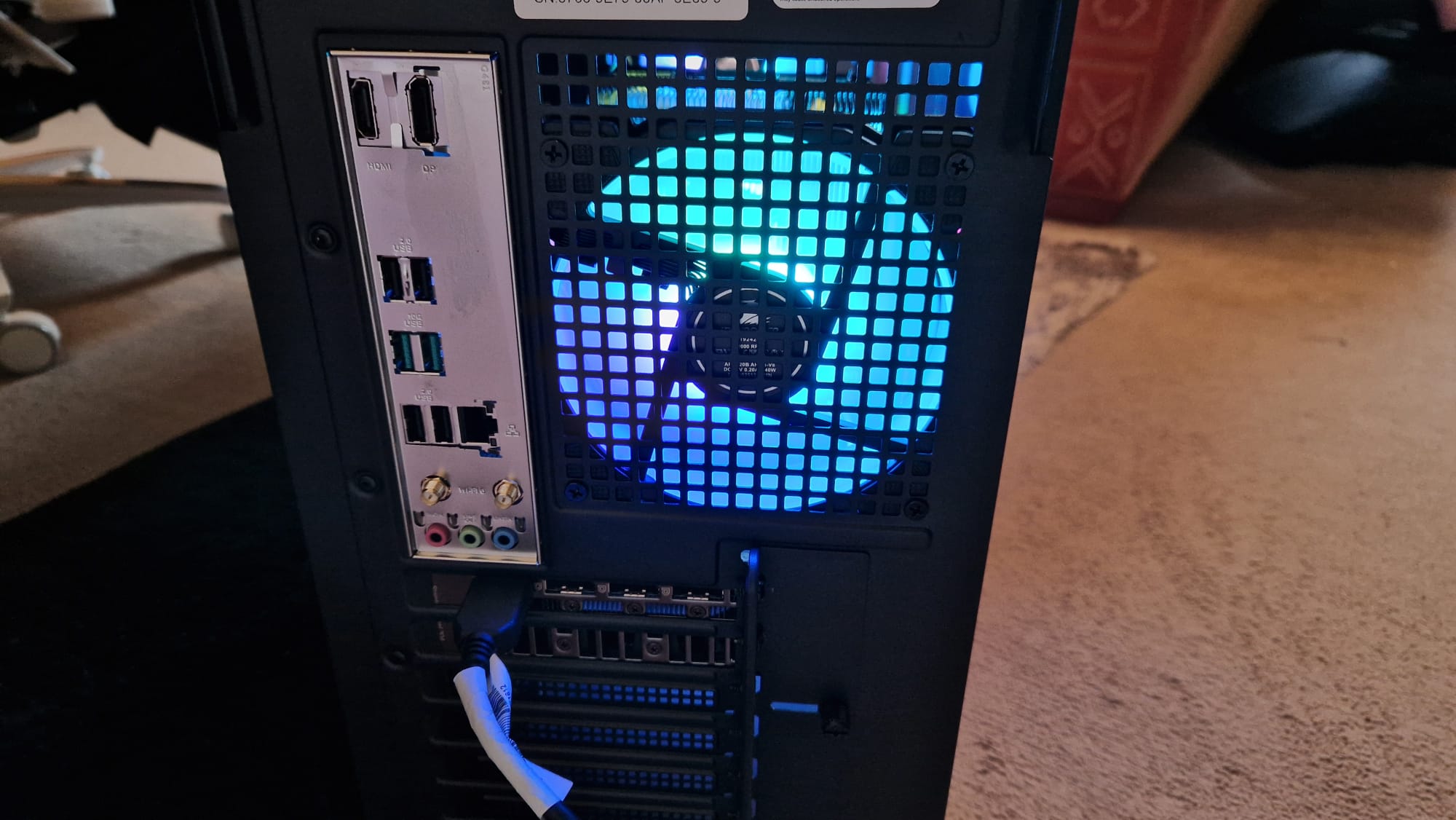
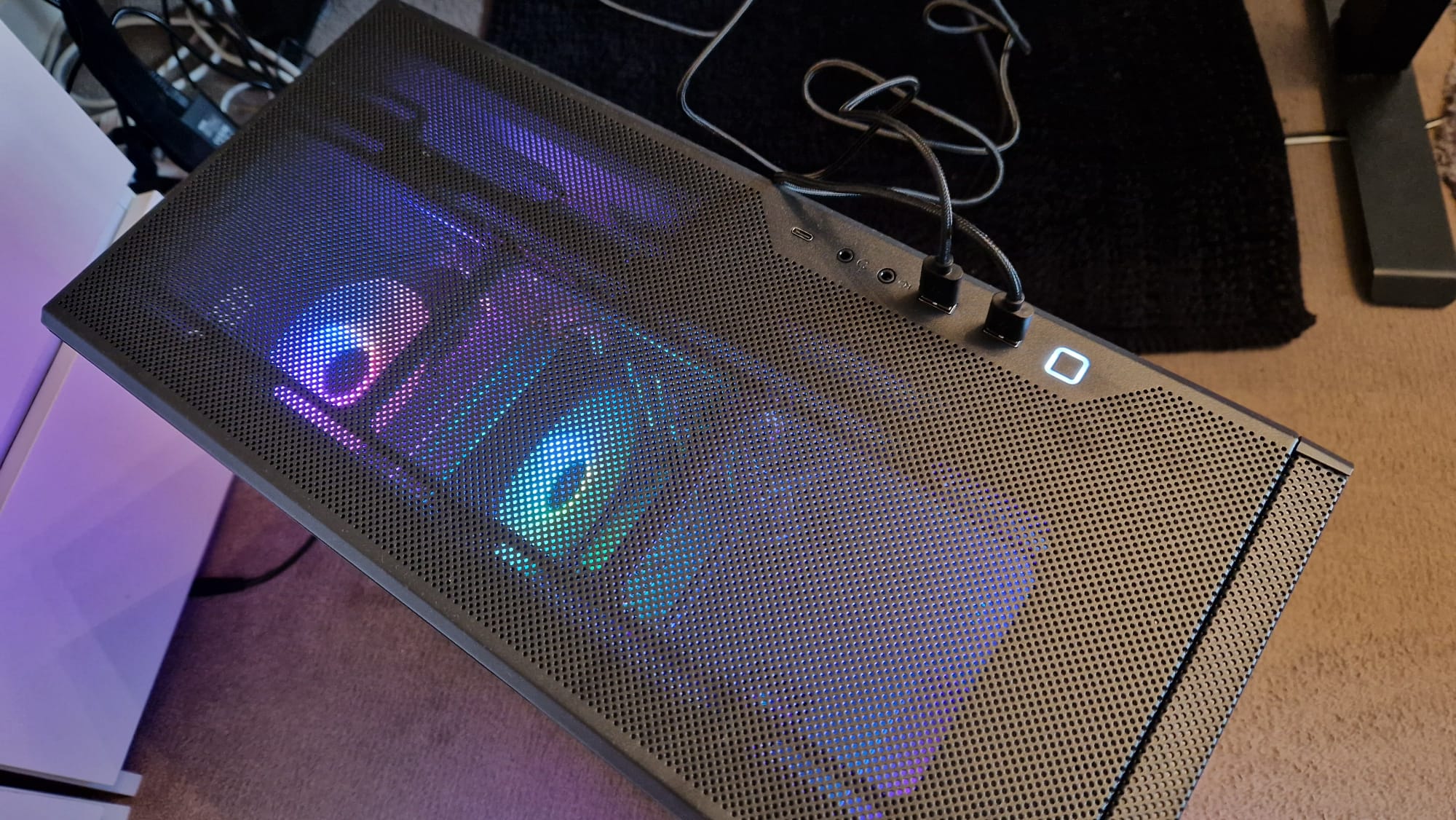
Then there’s connectivity, which combines the motherboard’s capabilities with the PC’s case. Around the back you’ll get an HDMI and DisplayPort bay (generous for a build that comes with a CPU that has no integrated graphics, but nice for futureproofing), then you’ll be able to hook up four USB 2.0 devices, and two USB 3.0 peripherals. There’s an ethernet port and a Wi-Fi 6.0 adapter. At the bottom lie some line-in audio ports, offering some extra compatibility with whatever sound system or headset you might own. The GPU, of course, comes with one HDMI 2.0 port, and three DisplayPort 2.1 bays. Moving to the top of the case, you can slot in an additional two USB devices, as well as a USB-C device. There are also some more audio jacks and a power button.
As an added bonus, iBUYPOWER’s Slate Mesh PCs come with a handy mouse and keyboard - a nice add-on for those who are struggling to afford a gaming rig and all of its various peripherals at the same time.
Performance
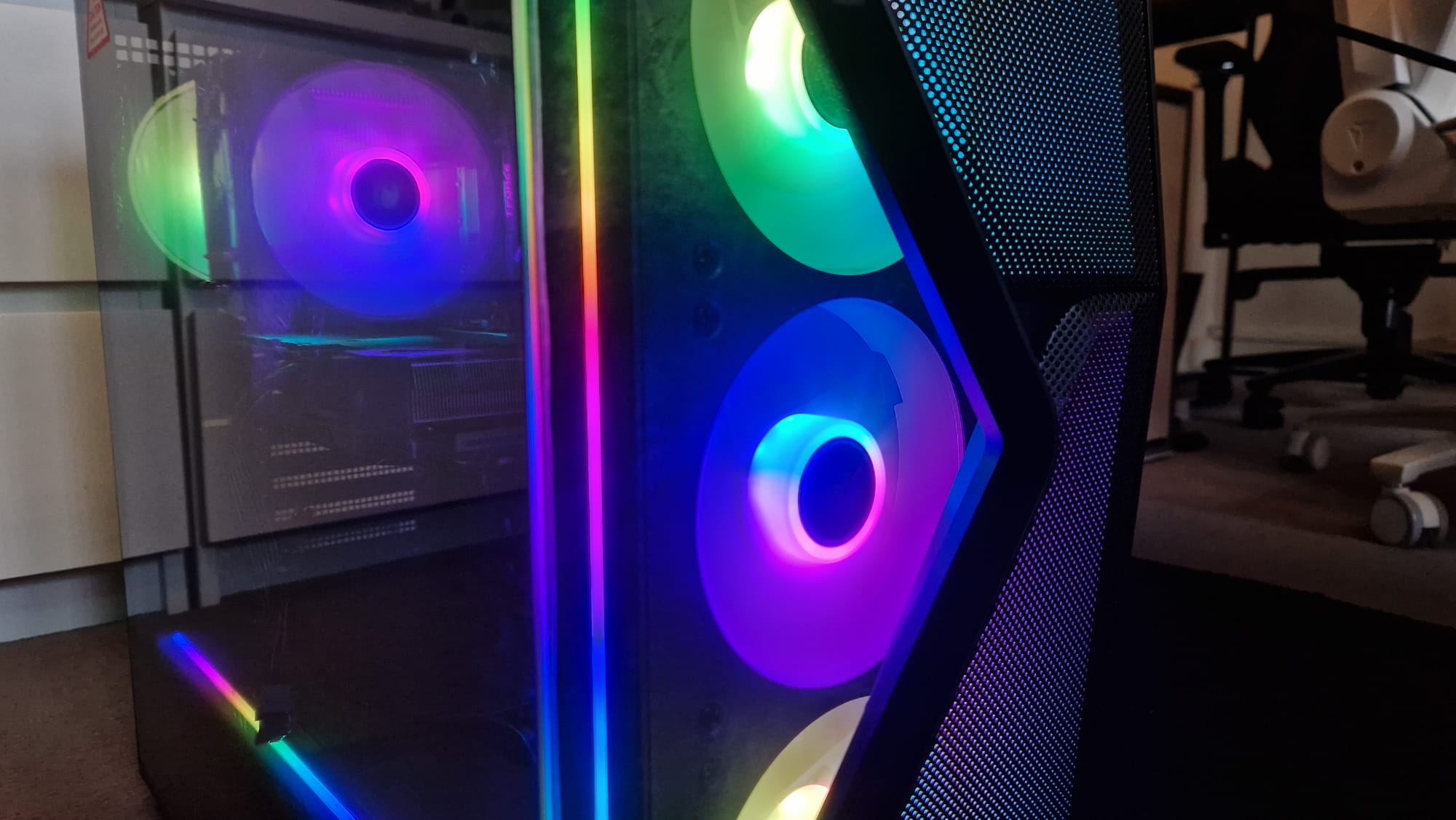
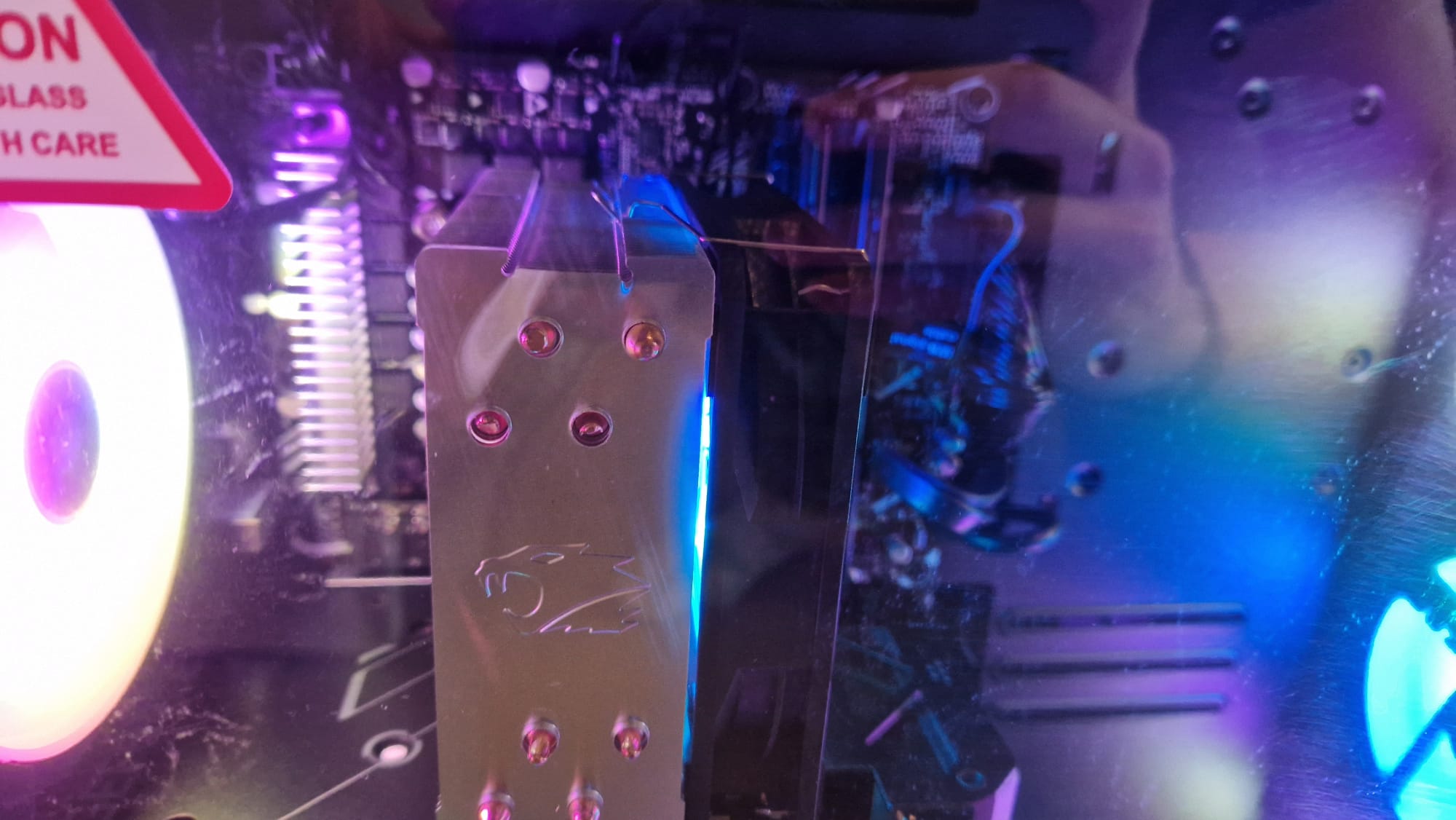
For a PC of this price, there’s some real versatility to be had in terms of resolution. The RTX 4060 Ti isn’t meant to be a 4K graphics card, but I found playable results lurking at that resolution. The capability this best graphics card contender has is bolstered by the choice of the 14th Gen Intel Core i7 processor. 20 Cores and 28 Threads gives you room to gallop, so this is a rig even content creators who demand a lot of their processors could consider.
Cinebench:
Multi Core: 18550pts
Single Core: 2052pts
3DMark:
TimeSpy: 13 402
Firestrike: 29 721
Steel Nomad: 2 958
CrystalDiskMark:
Sequential read: 4,166 MB/s
Sequential write: 4,134MB/s
RAM readings:
40-40-40-76
(5,200MT/s / 4800MHz)
The CPU is cooled by one of iBUYPOWER’s homegrown coolers, and although this works just fine, it was frustratingly bent out of shape when I unboxed the PC. A lot of prebuilt gaming PCs come with vacuumed polystyrene inside them when shipped - this protects the motherboard and components from bumps on their way to you. However, even before I pulled this out of the case, the polystyrene had bent one of the CPU fan’s cooling panels. Luckily, this wasn’t a major issue and it could be folded back into place. I’m aware the PC I’m testing was shipped a greater distance than yours might be, so I don’t know if I had the usual packaging experience most buyers will.
Interestingly, this is the first gaming PC I’ve reviewed where the graphics card has come in a separate box, and I’ve had to install it. This isn’t a problem for me since I’ve done this plenty of times, but for someone buying their first-ever gaming PC, this might not be the completely prebuilt experience they’re after. To make things a bit stranger, my 4060 Ti GPU came in an RTX 3060 box, which was confusing. Again, I’m not sure if the PC I was sent will be an accurate showing of the usual iBUYPOWER shipping experience, so your mileage may vary.
On to benchmarking, which I’m pleased to say went well. Cinebench and 3DMark both turned out some great results, with the CPU in particular showing some real heft. Unfortunately, the same can’t be said for CrystalDiskMark, which continued a trend I’ve been noticing from prebuilt gaming PCs of late. As we found with our Refract Gaming Jade PC review, some brands will use a cheaper SSD to cut costs with prebuilt gaming PCs. The same is true here since WD Blue drives are really meant for content creators, and don’t have the sort of speeds the best SSDs for gaming do.
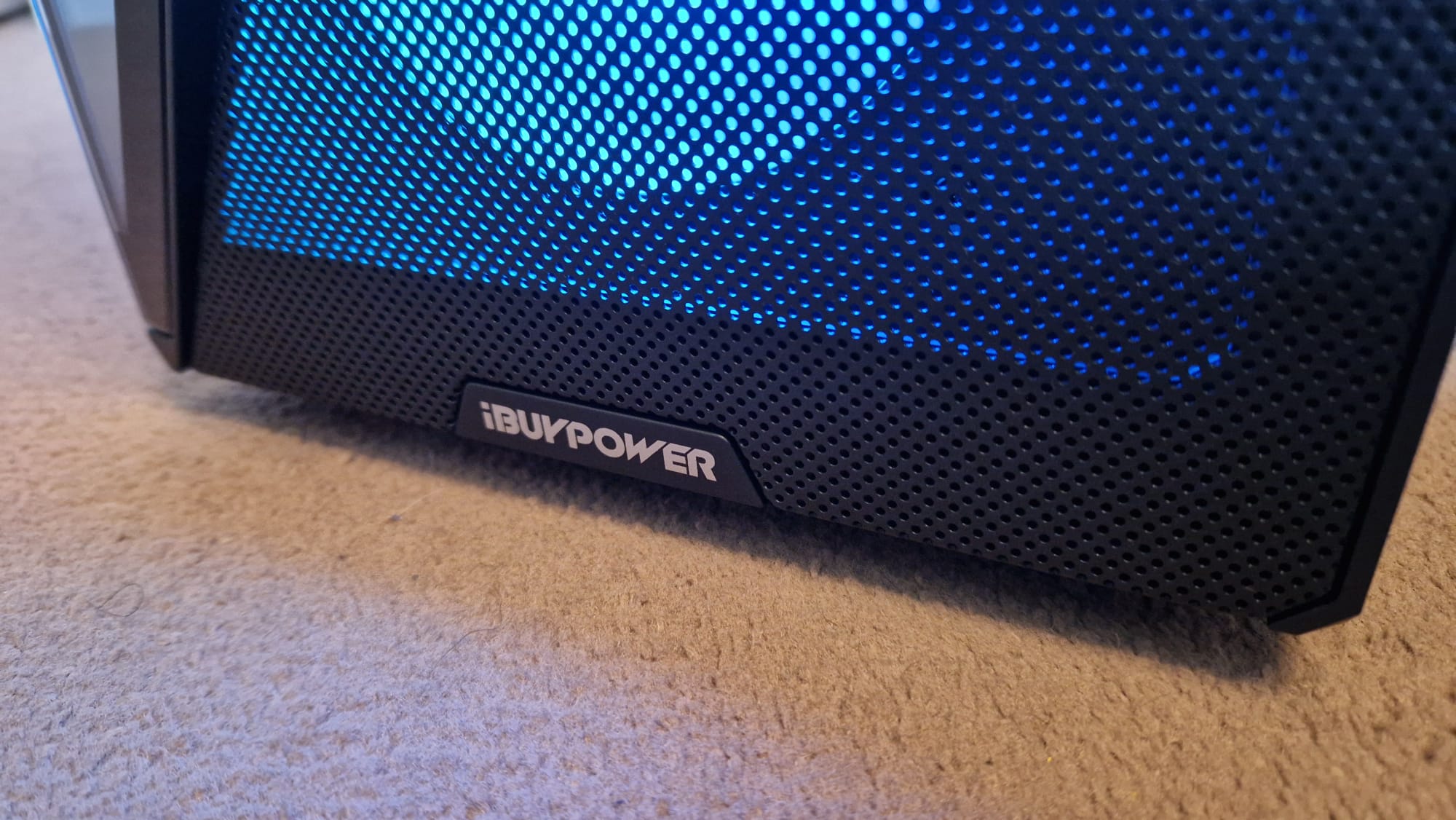
CrystalDiskMark showed a sequential read speed of under 5,000MB/s, which isn’t ideal. Don’t get me wrong, you’ll still have some speedy NVMe loading times, but for this kind of money, you should be getting closer to 6,000 or 7,000MB/s, as you do with the Maingear Zero Ruby’s T-Force SSD. For reference, the PS5’s custom SSD is around, or slightly over 5,000MB/s.
Temperatures, however, were maintained well for a machine that doesn’t have an AIO liquid cooler. Despite its bent panel, the cooler here managed to keep the CPU temperature down to a maximum of 81 degrees Celsius during a Cinebench Multi-Core test. During 3DMark’s tests, the CPU climbed to a peak of 84 degrees, with the GPU only reaching 68 degrees. These temperatures may seem high, and certainly will be if you compare them to a liquid-cooled machine. Still, I’ve seen a lot worse cooling from bigger, more expensive computers like the Acer Predator Orion 7000.
I was pleased to find that there was no annoying bloatware installed on the PC when I first booted it up. Save a small iBUYPOWER logo on the toolbar that opens up a hyperlink to the brand’s store, there’s nothing here that will be a detriment to your gaming power, and as far as my testing has shown, no nasty proprietary software will stop you from upgrading parts later on.
Speaking of gaming power, I’m quite happy with the frame rates the Slate Mesh was throwing at my display. Seeing over 4K60 from demanding games like Shadow of the Tomb Raider is great, but I didn’t expect this for each one of our testing games at this resolution (bar Total War, which scored 30fps). Pumping these games up to their maximum settings is designed to make gaming computers sweat, and besides maybe a little bit of noise from the chassis fans, iBUYPOWER’s Slate didn’t seem like it was working overly hard.
That’s only at 4K, too. If you’re playing on a 1440p monitor, you’re going to be seeing triple-digit frame rates for pretty much any game you play here, which is a real accolade for the 4060 Ti. Even after reviewing the Intel Core i7-13700K, I didn’t expect such consistent performance from this CPU and GPU pairing.
Should you buy the iBUYPOWER Slate gaming PC?
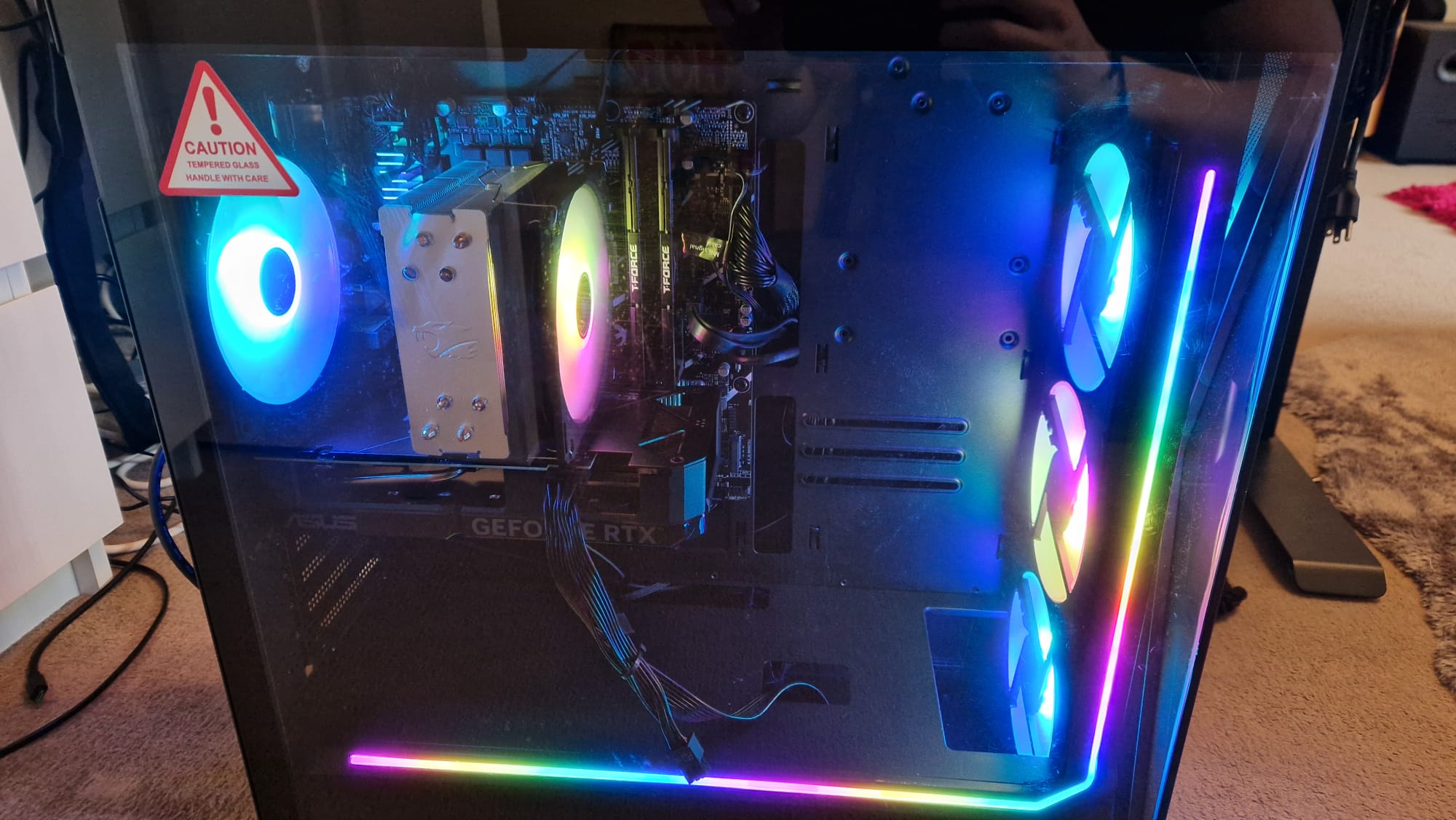
With great gaming performance and only a couple of caveats, I find myself with few reasons not to recommend the iBUYPOWER Slate. It’s not the best desktop out there overall, but for something of this price, which regularly sees discounts and has a wide range of possible configurations, there’s great value for money to be had with iBUYPOWER’s Slate Mesh range.
I’m willing to give iBUYPOWER the benefit of the doubt for its packaging mishaps, especially since this is a brand that shows a lot of care to its consumers. A thrown-in mouse and keyboard, no proprietary waffle, and a well-built computer are all tokens of good faith in this space. Whether you’re a long-term PC gamer looking to upgrade to one of the newer CPUs for gaming, or you’re a first-time buyer looking for something simple, the Slate range is a good choice.
How I tested the iBUYPOWER Slate 8MP 003
I’ve been using the iBUYPOWER Slate Mesh 8MP 003 for around three weeks now. In that time, I’ve used it for work, as well as some light gaming of my own. Of course, the majority of my time with it was spent putting it through its paces for review.
I used our standard testing procedure for it, looking to industry-standard benchmarking software to target each component. CrystalDiskMark gave me an idea of how the storage functions, CPU-Z showed me important RAM information, and Cinebench tested the CPU’s talents. 3D Mark gave me more information about how the GPU works alongside the other components, and HWiNFO let me keep tabs on temperatures.
For gaming tests, I used the built-in benchmarks from Shadow of the Tob Raider, Returnal, Hitman 3, and Total War: Warhammer 3. For these tests, I toggled between 1440p and 4K, and tested performance with maximum settings, DLSS, and Ray Tracing.
For more on how we test the latest gaming PCs, check out the full GamesRadar+ Hardware Policy.
Want to dive a little deeper? Check out the best RAM for gaming, the best computer speakers, and the best gaming chairs.




!["[T]he First and Fifth Amendments Require ICE to Provide Information About the Whereabouts of a Detained Person"](https://images.inkl.com/s3/publisher/cover/212/reason-cover.png?w=600)


